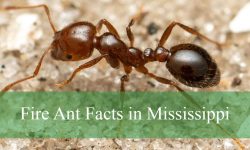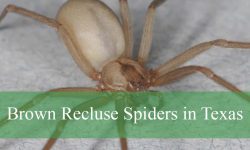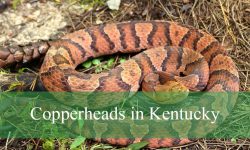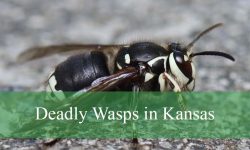Walking through Missouri’s forests and woodlands, the rhythmic drumming of woodpeckers instantly catches your attention. Each tap on a tree trunk signals activity, from feeding to claiming territory, and adds a unique soundtrack to the landscape. Observing these birds up close reveals their striking plumage, bold crests, and fascinating behaviors.
From the vibrant Red-headed Woodpecker to the enormous Pileated Woodpecker, Missouri offers a variety of species for birdwatchers of all levels. Whether you’re exploring a quiet park, a forest edge, or even your own backyard, the chance to spot one of these birds adds a sense of discovery and excitement to every outing.
With careful observation, binoculars, and patience, you can identify each species by their size, markings, calls, and drumming patterns. This guide will help you recognize nine woodpecker species in Missouri, complete with tips for identification, habitat, and behavior, making your birdwatching experience more rewarding.
Types of Woodpeckers Found in Missouri
Red-headed Woodpecker
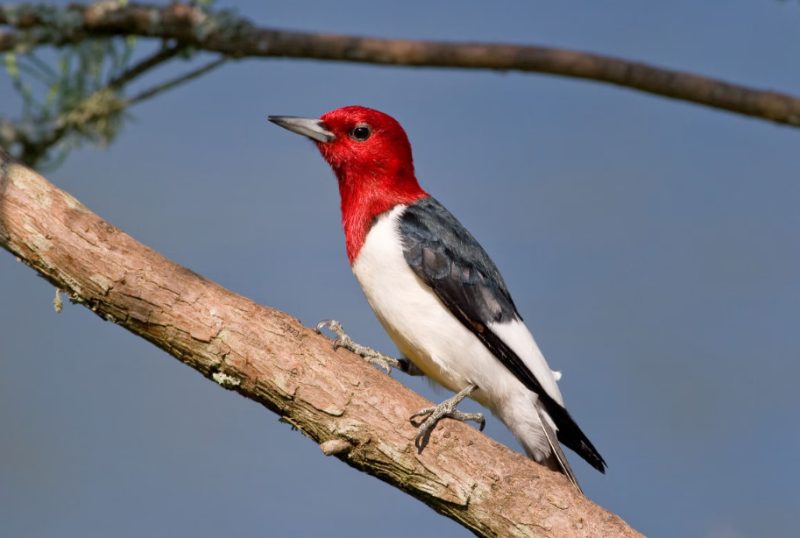
The Red-headed Woodpecker is instantly recognizable by its striking crimson head, neck, and throat, contrasting sharply with its pure white underparts and glossy black back and wings. Its bold coloration makes it one of the most visually stunning woodpeckers in Missouri. Juveniles display a more muted palette, with brownish heads and less defined patterns, making adult identification much easier.
Adults measure about 19 to 26 cm (7.5–10 in) in length, with a wingspan of roughly 35 to 43 cm (14–17 in). They have strong, chisel-like bills and short legs, adapted perfectly for clinging to tree trunks and foraging for insects or seeds. Their sharp, chattering calls and distinctive “chak-chak” drumming often alert birdwatchers to their presence.
Red-headed Woodpeckers favor open woodlands, forest edges, and areas with scattered trees, especially near fields and pastures. They often nest in natural cavities or old woodpecker holes and are territorial during the breeding season. In Missouri, they can be found across most regions during the warmer months, although some individuals may migrate short distances in the winter.
These birds have an omnivorous diet, feeding on insects, acorns, fruits, and occasionally small vertebrates. They are known for their habit of caching food, storing nuts and seeds for later consumption. A fun fact is that Red-headed Woodpeckers are excellent flycatchers, often catching insects in midair—a behavior not typical of most woodpecker species.
Red-bellied Woodpecker
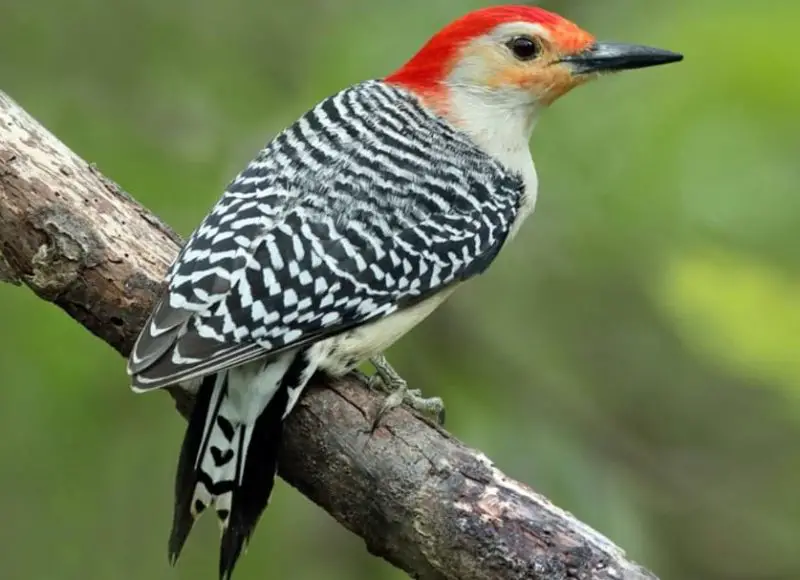
The Red-bellied Woodpecker is distinguished by its subtle red crown and nape, combined with a striking black-and-white barred back. Its name is slightly misleading, as the red on its belly is often faint and not easily seen unless the bird is perched in a specific way. Its pale face and light underparts with a tinge of red make it relatively easy to identify compared to similar species.
Adults are medium-sized woodpeckers, measuring about 22 to 26 cm (8.5–10 in) in length with a wingspan of 33 to 41 cm (13–16 in). They possess strong bills and zygodactyl feet, which aid in climbing and foraging along tree trunks. Their call is a rolling “churr-churr” that resonates throughout their wooded habitat.
Red-bellied Woodpeckers thrive in deciduous forests, suburban areas with large trees, and woodland edges. In Missouri, they are year-round residents and can often be seen visiting backyard feeders. They nest in tree cavities and readily use nest boxes, making them a favorite among bird enthusiasts.
Their diet mainly consists of insects, nuts, and fruits. They are adept at prying bark to extract hidden insects or acorns. An interesting fact is that Red-bellied Woodpeckers often store food behind loose bark or in crevices—a clever survival strategy during winter months.
Downy Woodpecker
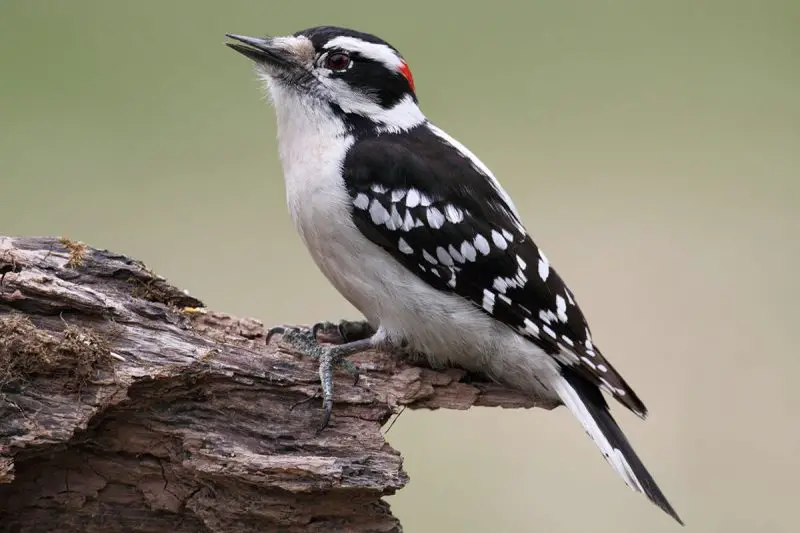
The Downy Woodpecker is the smallest woodpecker in Missouri, easily recognized by its white underparts, black-and-white patterned wings, and a small, neat bill. Males display a tiny red patch on the back of the head, while females lack this marking. Their compact size and dainty features make them less intimidating but just as active as their larger cousins.
Adults measure around 14–17 cm (5.5–6.7 in) in length, with a wingspan of 25–30 cm (9.8–11.8 in). They have short bills relative to their head size, ideal for gleaning insects from twigs and bark. Their high-pitched “pik” call and rapid drumming are frequently heard in forests and suburban areas.
Downy Woodpeckers inhabit a wide range of environments, including woodlands, parks, and backyard feeders. In Missouri, they are abundant year-round, often seen darting along branches or clinging to tree trunks. They nest in cavities, often excavated in dead or decaying wood.
Their diet is largely insectivorous, focusing on beetles, caterpillars, ants, and spiders, but they also eat seeds and suet from feeders. A fun fact is that Downy Woodpeckers sometimes mimic the drumming pattern of larger woodpeckers to defend territories or attract mates—a clever adaptation for such a tiny bird.
Hairy Woodpecker
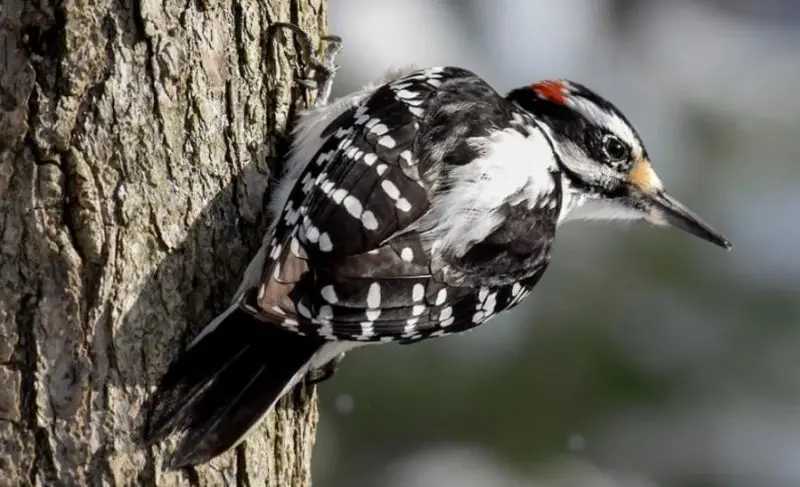
The Hairy Woodpecker closely resembles the Downy Woodpecker but is larger with a more robust, longer bill. Its black-and-white plumage is similar, but the Hairy Woodpecker has a solid white back and lacks the small, fine bill of the Downy. Males have a red patch on the back of the head, while females do not. Their appearance can easily confuse birdwatchers, but size and bill length are key identification traits.
Adults measure 18–26 cm (7–10 in) in length, with a wingspan of 30–36 cm (12–14 in). Their strong bills are perfect for chiseling deep into wood to find insects. The drumming of a Hairy Woodpecker is slower and louder than the Downy’s, often heard echoing through forests and woodland edges.
Hairy Woodpeckers inhabit deciduous and mixed forests, often near streams or open areas with mature trees. They are year-round residents in Missouri and frequently explore both rural forests and suburban landscapes. Their nesting involves excavating deep cavities in live or dead trees.
Their diet consists primarily of insects, especially beetle larvae and ants, but they also consume nuts and fruits. A fun fact is that Hairy Woodpeckers will sometimes follow squirrels to snatch nuts that the squirrels have buried—a smart, opportunistic feeding tactic.
Pileated Woodpecker
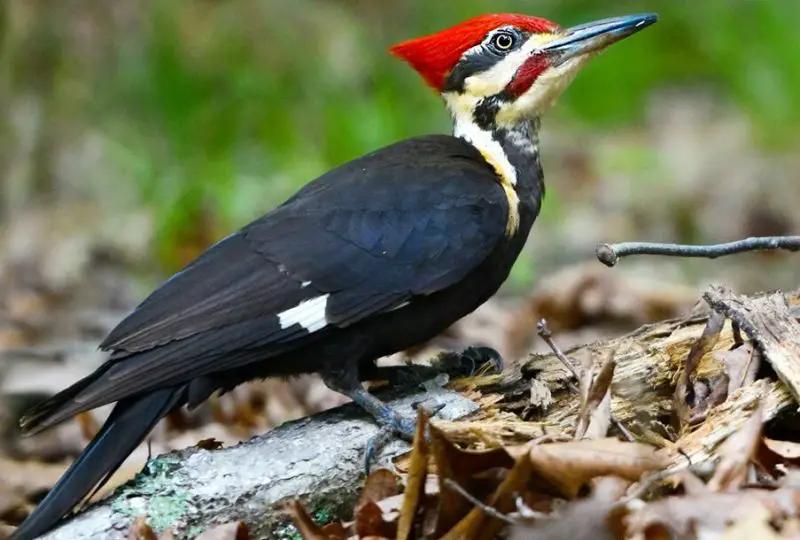
The Pileated Woodpecker is the largest woodpecker in Missouri, instantly recognizable by its dramatic red crest, black body, and striking white underwing patches visible in flight. Its long, chisel-like bill and elongated neck allow it to create large rectangular holes in trees. Juveniles have duller crests but otherwise resemble adults.
Adults measure 40–49 cm (16–19 in) in length with a wingspan of 66–75 cm (26–30 in). Their large size and loud, resonant drumming make them easy to locate. They emit a distinct, ringing “cuk-cuk-cuk” call, which can travel long distances through dense forests.
Pileated Woodpeckers prefer mature forests, especially with standing dead trees, but they can adapt to large suburban woodlots. In Missouri, they are year-round residents, often seen excavating massive holes while foraging for carpenter ants or nesting. Their nests are typically deep cavities in dead trees, often reused by other birds and mammals once abandoned.
Their primary diet consists of carpenter ants, beetle larvae, and other insects, though they also eat fruits and nuts. A fun fact is that the holes they create can be enormous—sometimes 12 inches tall and 6 inches wide—providing critical habitats for other wildlife such as owls, bluebirds, and bats.
Northern Flicker
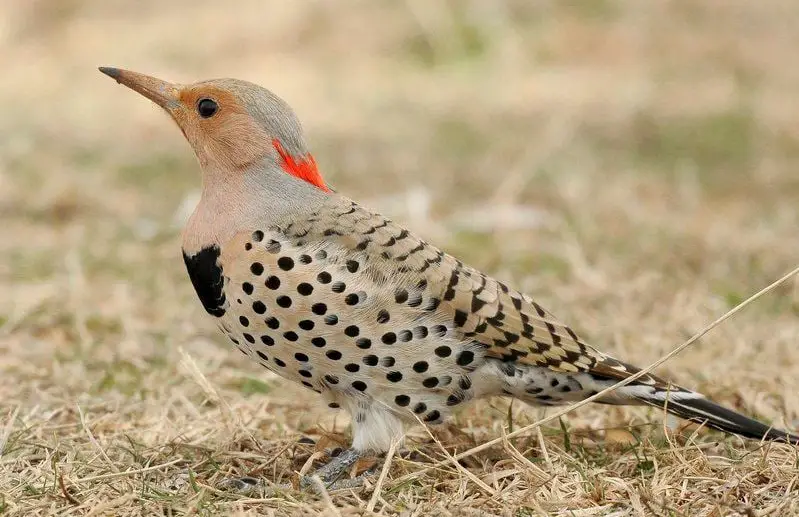
The Northern Flicker is a large, colorful woodpecker known for its brownish body with black spots, a black crescent on the chest, and a bright red patch on the nape (in most males). Unlike many woodpeckers, Flickers often feed on the ground, making them stand out. Their wings reveal flashes of white and yellow (or red, depending on the regional form) during flight.
Adults measure 28–31 cm (11–12 in) in length, with a wingspan of 42–51 cm (16.5–20 in). Their long, slightly curved bills are ideal for digging insects from soil. They have a distinctive “wick-a-wick-a” call and a loud, rolling drumming that resonates in open woodlands and suburban areas.
Northern Flickers inhabit open woodlands, forest edges, parks, and suburban yards. In Missouri, they are common year-round, though some populations migrate south in winter. They nest in tree cavities, often preferring dead or decayed trees for easier excavation.
Their diet consists mainly of ants and beetles, which they extract from the ground, as well as fruits and berries. A fun fact is that Flickers are among the few woodpeckers that forage primarily on the ground rather than tree trunks, sometimes even forming loose “feeding flocks” during migration.
Yellow-bellied Sapsucker
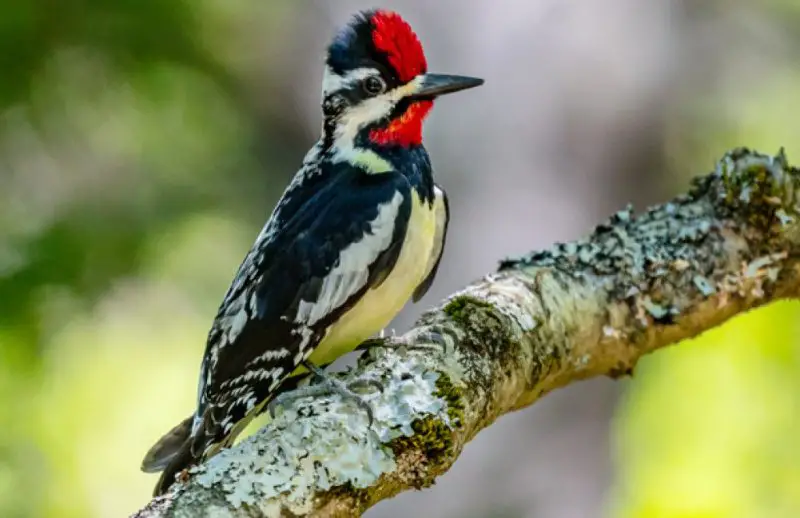
The Yellow-bellied Sapsucker is a medium-sized woodpecker easily identified by its red forehead and throat (in males), black-and-white striped face, and yellowish belly. Its distinctive feeding behavior, drilling neat rows of sap wells in tree bark, makes it recognizable even without seeing the bird up close.
Adults measure 18–22 cm (7–8.5 in) in length, with a wingspan of 30–40 cm (12–16 in). They have a relatively short, straight bill and strong feet for gripping tree trunks. Their call is a nasal “meow” or “squeak,” and they drum rapidly in short bursts to mark territory or attract mates.
Yellow-bellied Sapsuckers prefer deciduous and mixed forests, especially near birch, maple, and pine trees. In Missouri, they are primarily migratory, passing through in spring and fall, and overwintering in the southern U.S. and Central America. They nest in tree cavities, typically creating small, neat holes.
Their diet consists of tree sap, insects, and fruits. They drill small holes to access sap, which also attracts insects they feed on. A fun fact is that these sap wells provide food for other species, such as hummingbirds and insects, creating a tiny ecological niche wherever they feed.
Black-backed Woodpecker
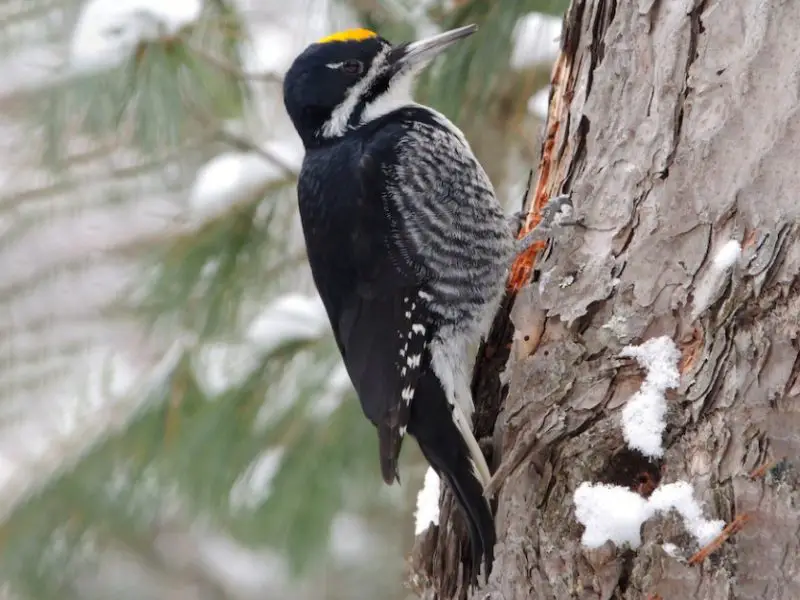
The Black-backed Woodpecker is a rare, mostly northern species that occasionally migrates into Missouri, especially after forest fires. It is characterized by its black back and wings, pale underparts, and a striking yellow crown in males. Its unique coloration and rarity make sightings a special treat for birders.
Adults measure 22–27 cm (8.5–10.5 in) in length, with a wingspan of 38–45 cm (15–18 in). They have strong bills and zygodactyl feet suited for climbing charred trees. Their call is a sharp, high-pitched “kik” or “chik,” and they drum softly compared to other woodpeckers.
Black-backed Woodpeckers inhabit burned or dead conifer forests, feeding primarily on beetle larvae that infest dead wood. In Missouri, they are extremely rare and typically appear only during irruptive movements following major disturbances farther north. Their nesting occurs in cavities in standing dead trees.
Their diet is almost entirely insectivorous, with a strong preference for wood-boring beetle larvae. A fun fact is that Black-backed Woodpeckers are considered “fire specialists,” thriving in recently burned forests where food and nesting opportunities are abundant.
Lewis’s Woodpecker

Lewis’s Woodpecker is a very rare visitor to Missouri, easily recognized by its dark greenish-black back, pinkish belly, and large red face patch. Its long, broad wings and slower, more deliberate flight set it apart from other woodpeckers. Observing this bird in Missouri is considered a notable event for birders.
Adults measure 28–33 cm (11–13 in) in length, with a wingspan of 46–51 cm (18–20 in). They have a slightly flattened bill for catching flying insects. Their call is a low, chuckling “chuck-chuck,” and they often perch prominently while scanning for prey.
Lewis’s Woodpeckers prefer open pine forests, woodland edges, and riparian areas. In Missouri, they are very rare, usually appearing during migration or as vagrants from western populations. They nest in tree cavities, often in snags or dead branches, showing a preference for large, open habitats.
Their diet is unusual for woodpeckers, consisting mainly of flying insects, berries, and nuts. A fun fact is that Lewis’s Woodpeckers often hunt like flycatchers, sallying from perches to catch insects midair, a behavior uncommon among other woodpeckers.
Best Time and Places to See Woodpeckers in Missouri
Missouri hosts a variety of woodpecker species year-round, but some are seasonal or rare visitors, so timing and location are key to spotting them. The spring (March–May) and fall (September–October) migrations are excellent for observing migratory species like the Yellow-bellied Sapsucker and Lewis’s Woodpecker. Resident species, including Red-headed, Red-bellied, Downy, Hairy, Pileated, and Northern Flickers, can be seen throughout the year, though they are often more active during the breeding season in late spring.
Forests and woodlands are prime locations for most species. Pileated Woodpeckers prefer mature forests with large trees, while Red-headed and Red-bellied Woodpeckers are commonly found at forest edges, open woodlands, and near pastures. Downy and Hairy Woodpeckers thrive in both rural forests and suburban areas, making backyard feeders with suet or nuts a convenient viewing spot. Northern Flickers often forage on open ground near wooded areas, giving birders a chance to see them outside tree trunks.
Wetlands, river corridors, and riparian zones are ideal for Yellow-bellied Sapsuckers during migration, as these areas host the deciduous and mixed forests they prefer. Rare species like the Black-backed Woodpecker are most likely to appear in post-burn coniferous forests, typically in northern Missouri after disturbances. Lewis’s Woodpecker sightings are extremely uncommon, usually in open woodland or prairie-forest edge habitats during migration periods.
For optimal birdwatching, early morning hours are best, as woodpeckers are most active then, drumming, foraging, and calling to establish territories. Using binoculars along forest trails, woodland edges, or even suburban yards with large trees can greatly increase your chances. Listening for characteristic calls and drumming patterns is often more effective than searching visually, especially for camouflaged species like the Downy or Hairy Woodpecker.
FAQs About Woodpeckers in Missouri
How many woodpecker species are found in Missouri?
Missouri hosts at least ten commonly observed woodpecker species, including Red-headed, Red-bellied, Downy, Hairy, Pileated, Northern Flicker, Yellow-bellied Sapsucker, Black-backed Woodpecker, and Lewis’s Woodpecker. Some species are year-round residents, while others are rare or migratory visitors passing through the state during spring and fall.
How can I identify different woodpecker species in Missouri?
Woodpecker species can be distinguished by size, plumage patterns, bill length, and distinctive markings. For example, Red-headed Woodpeckers have bright crimson heads, Pileated Woodpeckers have a large red crest and black body, and Downy Woodpeckers are tiny with a small bill and black-and-white patterns. Observing drumming patterns, calls, and feeding behavior also helps in identification.
What behaviors should I watch for when observing woodpeckers?
Woodpeckers exhibit a range of fascinating behaviors. They drum on tree trunks to establish territory and attract mates, excavate cavities to find insects, and sometimes forage on the ground like Northern Flickers. Yellow-bellied Sapsuckers drill sap wells that attract insects and even other birds. Watching for these behaviors can make spotting camouflaged or shy species much easier.
What do Missouri woodpeckers eat?
Most woodpeckers feed on insects, beetle larvae, ants, and other invertebrates found under bark or in wood. Many species also eat fruits, nuts, and seeds, especially during winter when insects are scarce. Red-headed Woodpeckers and Northern Flickers are known to cache food for later, while Yellow-bellied Sapsuckers feed on tree sap in addition to insects.
How can I attract woodpeckers to my backyard?
Providing suet, nuts, and seed feeders can attract several woodpecker species, including Downy, Hairy, and Red-bellied Woodpeckers. Planting native trees that produce fruits, nuts, or host insects also encourages natural foraging. Keep feeders in quiet areas with nearby trees or shrubs to offer shelter and perching spots.
Are there any rare or special woodpecker sightings in Missouri?
Yes. Black-backed Woodpeckers are rare, typically appearing in northern Missouri following forest fires or other disturbances. Lewis’s Woodpecker is extremely uncommon and is usually seen only as a migratory visitor in open woodland or prairie-forest edge habitats. Spotting these species is considered a treat for birdwatchers and often requires visiting specific habitats at the right season.

